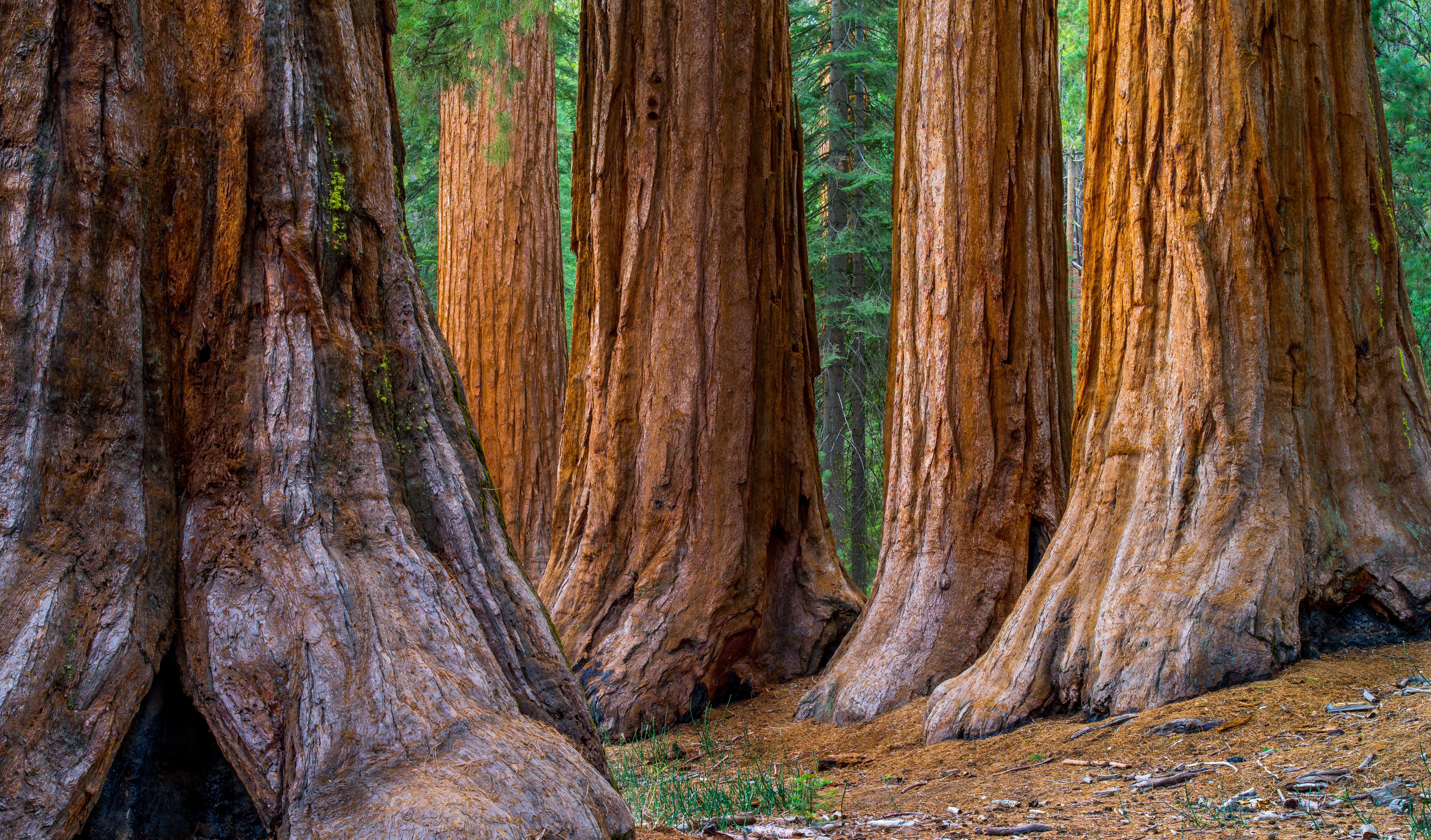Changes in forests and woodlands
California’s forests and woodlands today have more small trees and fewer large trees compared to 80 years ago. In addition, the areas occupied by pines have decreased in all regions studied, while the areas occupied by oaks have increased in the Sierra Nevada but have decreased in the South and Central Coast.
In California, changes in forest structure and composition – that is, the size distribution and types of species of trees – have occurred over the past several decades. These changes can have profound cultural, ecological and economic consequences. Similar changes are happening across the globe. Although land-use change and harvesting contribute to their decline, large trees are less able to survive warmer, drier conditions. Smaller trees store considerably less carbon and lead to denser forests, which are at increased risk of pest infestations and wildfires. For more information, download the Changes in forests and woodlands chapter.
Large trees, such as the old growth in Yosemite National Park (below), are more vulnerable to drought and water stress than smaller trees. Since the 1930s, the number of large trees has declined by half, whereas the number of small trees has more than doubled.

Credit: Scott_Walton, iStock
What does this indicator show?
- Forests across much of California today have fewer large trees and more small trees compared to the 1930s. Large trees declined the most in Southern California (by 70 percent); small trees increased the most in the Sierra Nevada highlands.
- Over the same period, pines have declined in all regions of the state; oaks have increased in the Sierra Nevada, but decreased in the South and Central Coast.
Why is this indicator important?
- Changes in forest structure and composition could impact important functions of forest ecosystems such as providing wildlife habitat, controlling erosion, storing carbon, producing timber, and providing recreational opportunities. Many California Tribes consider certain trees to be culturally significant.
- Tracking changing vegetation patterns and the factors that influence them provides critical information for anticipating and managing future forest responses to climate change.
What factors influence this indicator?
- Statewide, changing forest patterns have been associated with decreased water availability. This is tracked using a metric called “climatic water deficit,” which represents plant water demand relative to available soil moisture. Climatic water deficit increases with warmer temperatures and low precipitation.
- At elevations up to about 5,000 feet, where pines and oaks grow together, wildfires have removed dominant pines and other conifers (needle-leafed trees), allowing resident oaks and chaparral to establish and become the dominant vegetation.
- Other factors potentially contributing to shifts in the oak-to-pine ratio include fire suppression and logging.
New information presented in the 2022 report is summarized below:
- In areas burned by wildfires in the Lassen National Forest, California black oaks are better able to survive and regrow than conifers; this resilience has been attributed to carbohydrate reserves in the oak root systems.
- In the Klamath Mountains, fire suppression has led to fewer oaks and more pines and Douglas fir in modern (2008 to 2017) forests compared to historical (1872 to 1884) forests. This shift, in combination with the presence of more small trees and climate conditions, has increased the fire risk in this region.
- Twice the number of large trees died in the Sierra Nevada than small trees during an eight-year period that includes the drought of 2012-2016. Tree deaths were linked to warming temperatures, reduced water availability and competition with other trees – a finding consistent with other studies of tree mortality.
A 1930s survey of California’s vegetation led by A. E. Wieslander (the Vegetation Type Mapping or VTM Project) serves as a valuable resource for examining how vegetation in the state has changed since the early 20th century. Historical data used in this indicator are from this survey.

Credit: Marian Koshland Bioscience, Natural Resources and Public Health Library, University of California, Berkeley
Additional resources
- Weislander Vegetation Type Mapping
- US Forest Service, Forest Inventory and Analysis
